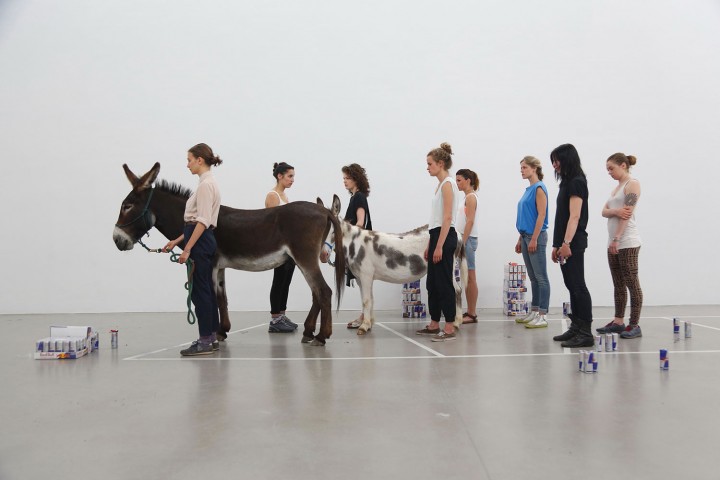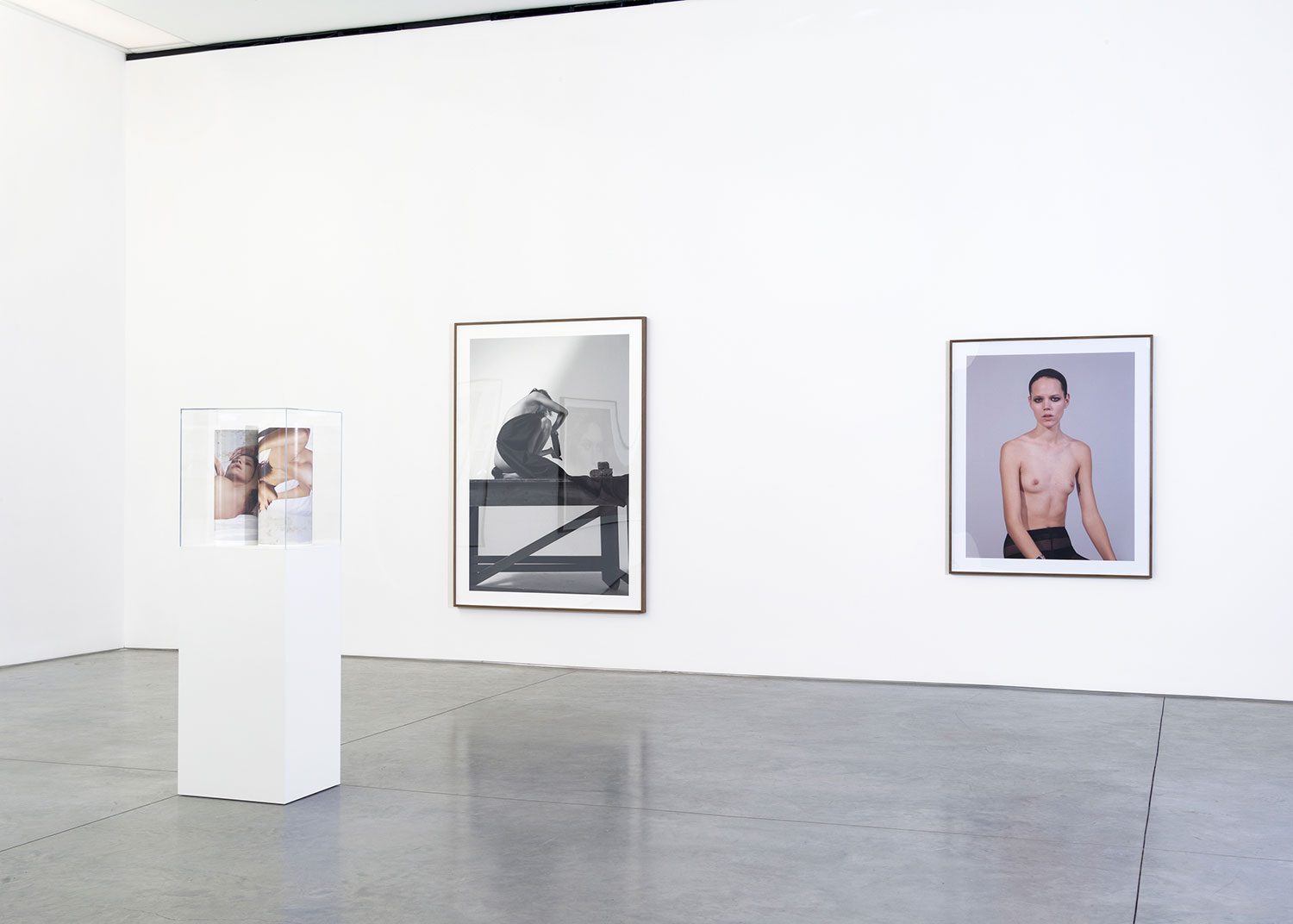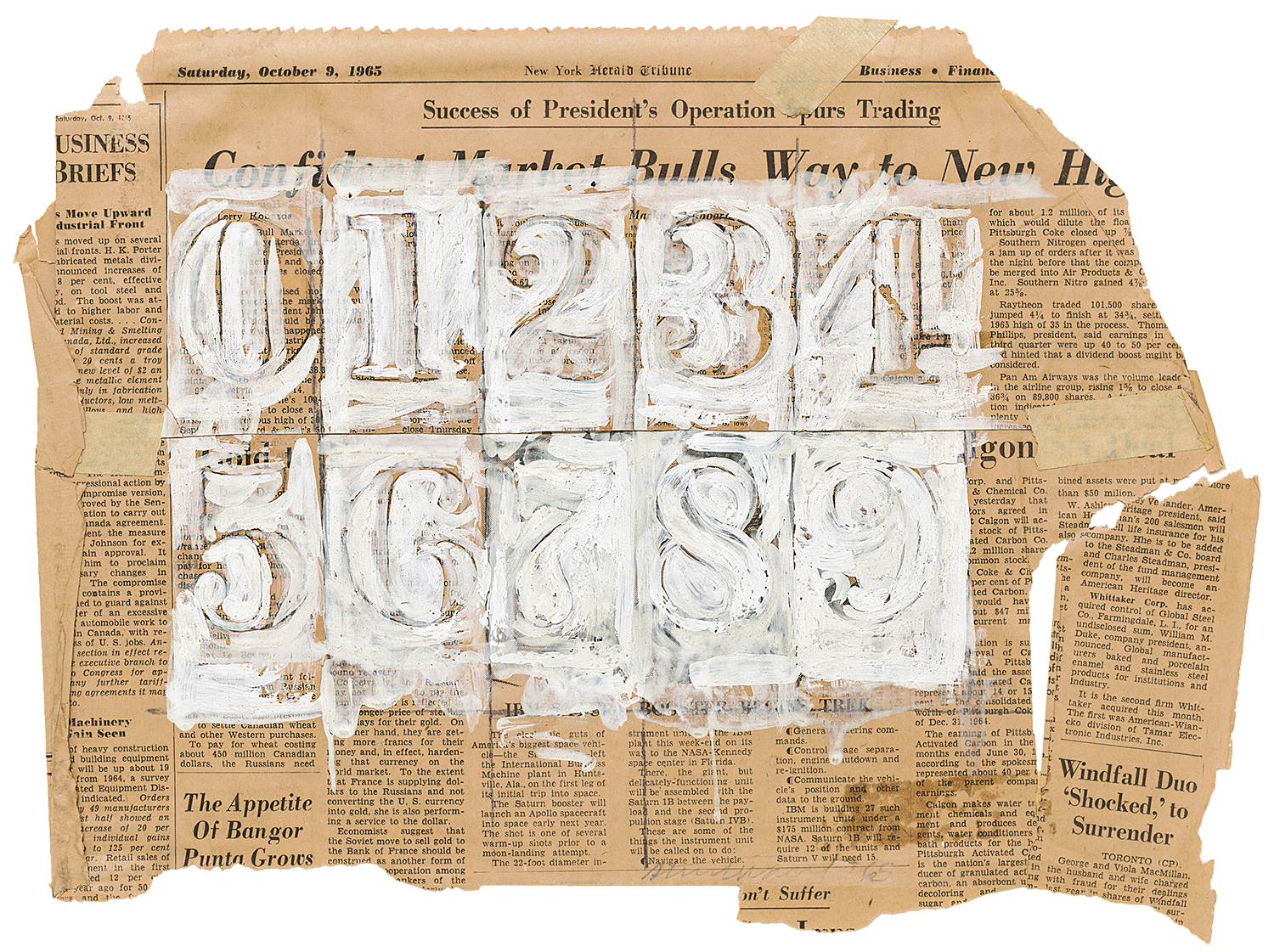
German artist Anne Imhof recently staged a series of performances entitled School of the Seven Bells (SOTSB) at Portikus in Frankfurt (4th of at least three, 2013), the New Jerseyy exhibition space in Basel (5th of at least three, 2013), and Francesca Pia gallery in Zurich (6th of at least three, 2013).
SOTSB is primarily based on a range of hand gestures by which an object is moved from one hand to the other. In his 1959 movie The Pickpocket, Robert Bresson portrays a group of pickpockets who let their loot circulate among a group of accomplices until its location is no longer traceable and they can leave crime scene. Their transactions range between the inscrutable, the obvious and the faked.
Imhof adopts and internalizes the motions of these transactions with a group of performers who she has collaborated with throughout various performances over time. These performers constantly expand the spectrum of motions throughout the rehearsals by teaching each other motions that originate from their personal habits. In their entirety these motions could be summarized as follows: interactions that structure public space but that require privacy and intimacy; cruising; secret salutations; “waiting for the man”; pickpocketing; flirting; and transactions based more on crossing lines of sight than on official communication.
The core group of actors is expanded for each performance by local acquaintances, who are instructed in the choreography only a few hours in advance, and who therefore only receive incomplete information, which limits their ability to act. The internal politics of organized gangs function similarly, with inner and outer circles as a means of self-protection.
The architecture of SOTSB is organized in a similar way: the group of insiders is initially located in the center, with the less initiated around them and the audience at the margins of the mostly empty exhibition spaces. The performance begins with the exchange of small metal rods among the performers via their internalized motions.

The sequence of these motions isn’t based on a fixed logic; they serve rather to maintain a constant fluidity. Inactive performers kneel, waiting, along the gallery walls beside the audience, trying to re-enter the action at a moment of their choosing. From time to time the performers walk along the walls, holding the metal rods against them and gouging lines on the surfaces as documentation of their movements — just as the exchanges of the metal rods cut through the space with invisible lines. The result of these various intertwined motions is a meshwork of vectors constantly changing its rhythm, pace and direction — its systematics becoming increasingly indecipherable for the viewer as for the participating performers. The performance is thus based on a system that unifies essentially incommensurable singular units on different levels of access. It therefore performs collapse as its only function.
Here improvisation is understood as rupture, or rather as a series of interruptions — in their continuity the kind of interruptions that are aimed against all networks, against everything that flows, against everything that strives without questioning.
The performance, which lasts several hours — until it could be assumed that all possible courses of action have been (superfluously) completed — increasingly estranges its participants, including the audience. The origin of this estrangement, however, does not lie in the repetition of the action (observe, comprehend, act, rest, act again, repeat) — in fact there is no repetition, despite its appearance. Instead the estrangement lies in the realization on the part of all participants that they aren’t components of this apparent system, but singular unconnectable units, and that the consequences of their actions are as abstract as the consequences of their non-participation.
The WTF? becomes a hyper-stimulated passivity in which all hypothetical assumptions throw the participants so far back to themselves that they only and exclusively represents themselves, which increasingly shows in their behaviors. The oppressive white of the empty gallery walls becomes a stage for self-representation as estrangement, as a state of self-reflection.
The performance itself and its multidirectional vectors connecting the actors, together with what is left of the markings on the walls, charts a circuit diagram of its own collapse. Nothing becomes, but everything seems to be in a state of becoming.
Imhof’s more recent performance entitled Rage (at Galerie Deborah Schamoni, Munich, and at the Volkshaus, Basel, both in 2014) follows a similar pattern as SOTSB in terms of its preparation and duration. Rage is based on physical postures that can be vaguely categorized as submissive or dominant, with various shades and nuances in between.

Rage also includes actions in which objects or liquids are inserted into the performers’ mouths. The performers respond to this by hyperventilating at different points during the performance, which creates the impression that they are fending off being penetrated. For Rage, the space is covered in the toxic yellow light of sodium vapor lamps, which makes the space appear monochromatic and gives it a feverish physicality. The space’s architecture is expanded by various artifacts, most prominently a diagonal line marked on the floor, with regard to which the performers organize their pacing about the space.
Interestingly, Imhof integrates language into the performance of Rage, while SOTSB vehemently refuses to vocalize itself and instead insists on the existence of a parallel, intuitive and non-verbal language. Imhof combined language fragments and phrases from the participating actors with fragments from her personal experience, and edited the language into a text that, together with an incomplete invented alphabet, serves as an internal document, with the two documents unable to completely decipher one another. The documents rather serve as a tool during the rehearsals that can either add text or defamiliarize existing text in various situations.
Throughout the course of the performance, physical activity and speech seem to take place separately. At certain points a meeting of the two components becomes possible through a mutual translation of action and alphabet; B: doby language; D is dominant green; F: contract; H: horizontal vertical; Q: enough, etc. Does the performance edit a text or is the text a performance?
Kathy Acker’s text “Against Ordinary Language: The Language of the Body” would be worth mentioning here. In this text Acker investigates the hierarchy between language and body, describing how language — just like a muscle — has to be broken via repetition in order to grow. Similar to Acker’s text, there is a competition between speech and corporality in Rage. They find partially common ground only in order to realize, by means of each other, that they are both in a state of ongoing decomposition.
The plot always gets interrupted by a messenger who rises from the audience and briefly becomes part of the action in order to deliver an object. For viewers who have already seen SOTSB, the messenger takes the shape of a memory manifesting itself out of the yellow field. Rage is much more static than SOTSB. Once could even argue that Rage is so static that it is more of a picture that, while it’s being deciphered, evokes irritations on its surface and yet remains a complete image.

I suppose that a placement of Anne Imhof’s practice within a history of performance would miss its goal. Instead I would like to try to conceive Imhof’s scenarios as images in relation to which the viewer can adopt a range of perspectives. Imhof multiplies these perspectives by integrating additional protagonists specific to each context (the messenger, the outer circle), which make the barricade between audience and actors appear porous. Each time, these people are acquaintances from local environments who have been given minimal instructions to integrate them into the course of action. While Antonin Artaud speaks of the shared breath that connects the audience with the performer, here the shared interpersonal creates a precarious relationship. The audience exists simultaneously as an image within the same conditions to the performers.
Due to the lack of a better illustration I would like to suggest Francis Picabia’s Transparencies, which create new and incomplete entities through the overlaying of their silhouettes. If the performers of SOTSB and Rage are to be understood as silhouettes who carry their insides on the outside, they merge with each other through the rehearsals, performances and repetitions into new and increasingly assimilated subjects — a process that may be understood as analogous to the automated re-hierarchization of information within networks, which thus organize the subject anew.
What is often misunderstood in Imhof’s images as deceleration is rather a viscosity between the actors, who fend off the fluidity that would accelerate their own end. While the historical producers of interpersonal cruelty (Artaud, Fassbinder, etc.) always drove the action onward, here it is the moments in which nothing happens that appear the most cruel, the moments in which both viewer and protagonist are aware that the action is continuing invisibly.
At a time when information technologies increasingly render both public and private interactions invisible, Imhof insists on visibility and intimacy — the systemic inefficiency of which threatens to collapse this very system.
In her performances she invokes the liquid hell in which we all find ourselves. She invokes the subject whose core action is to calculate the sum of his or her transactions and to measure them in relation to all other subjects. At the same time, Imhof suggests ways out. She insists on the recalibration, the estrangement and the reinvention of a new language that stems from the official text — until the former is overwritten.





